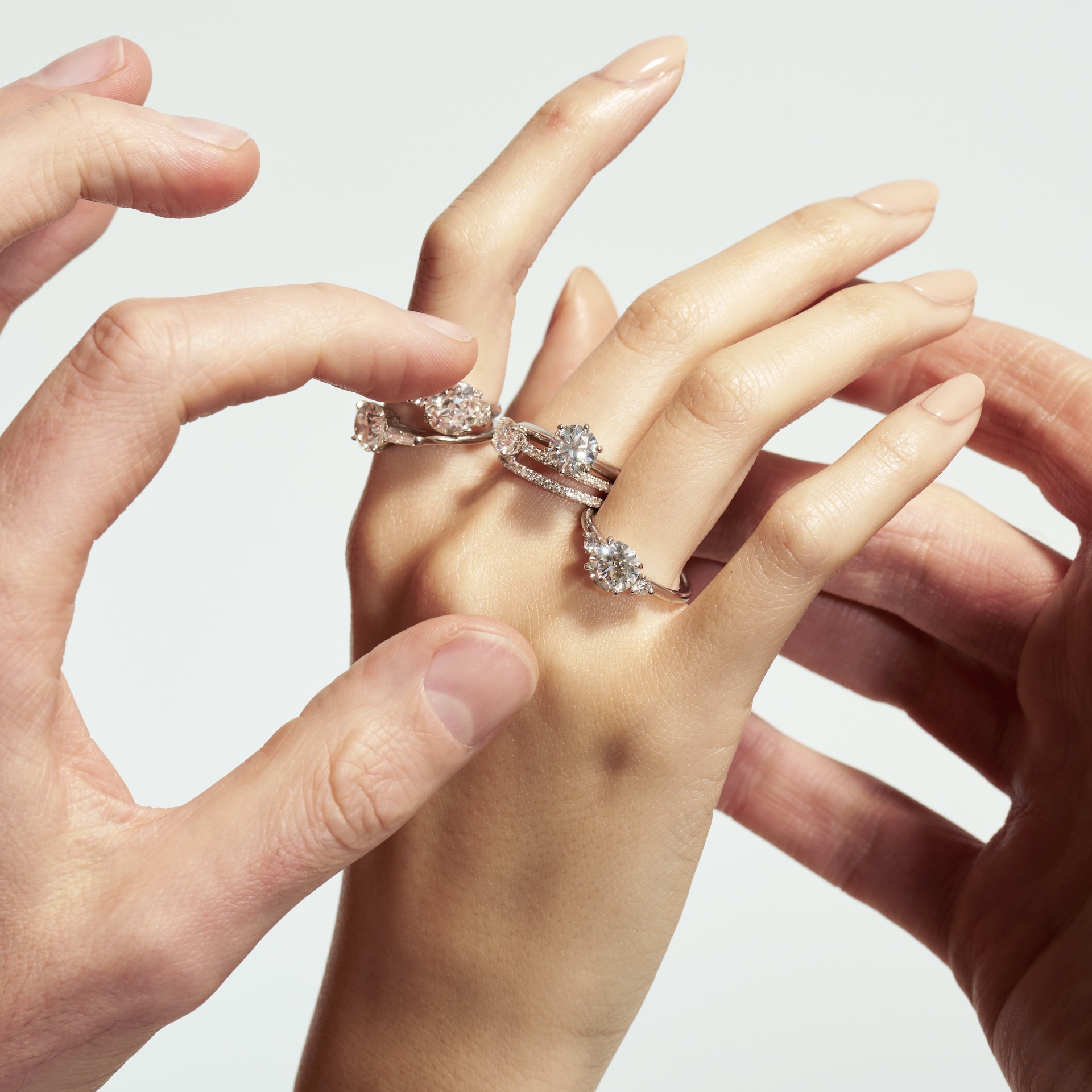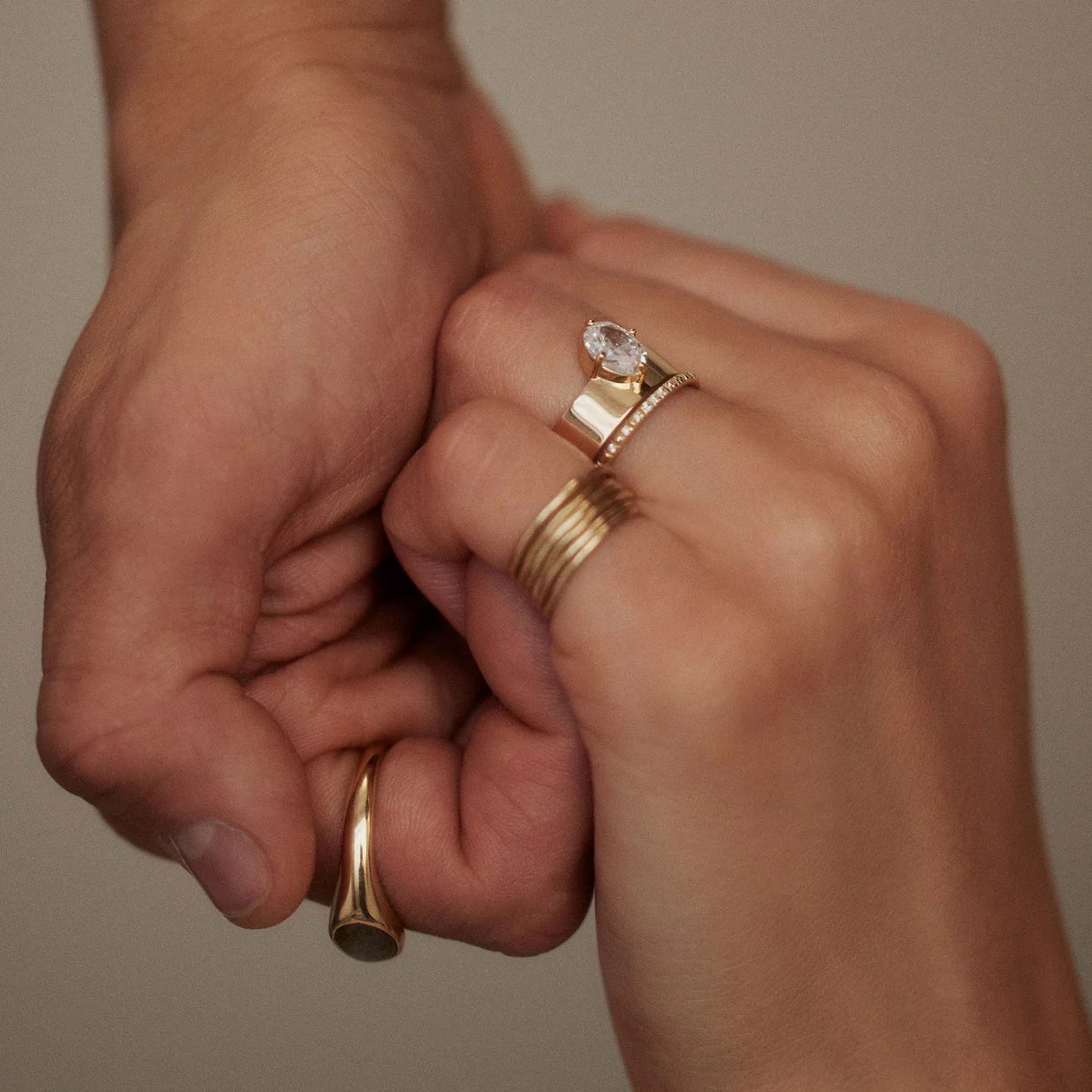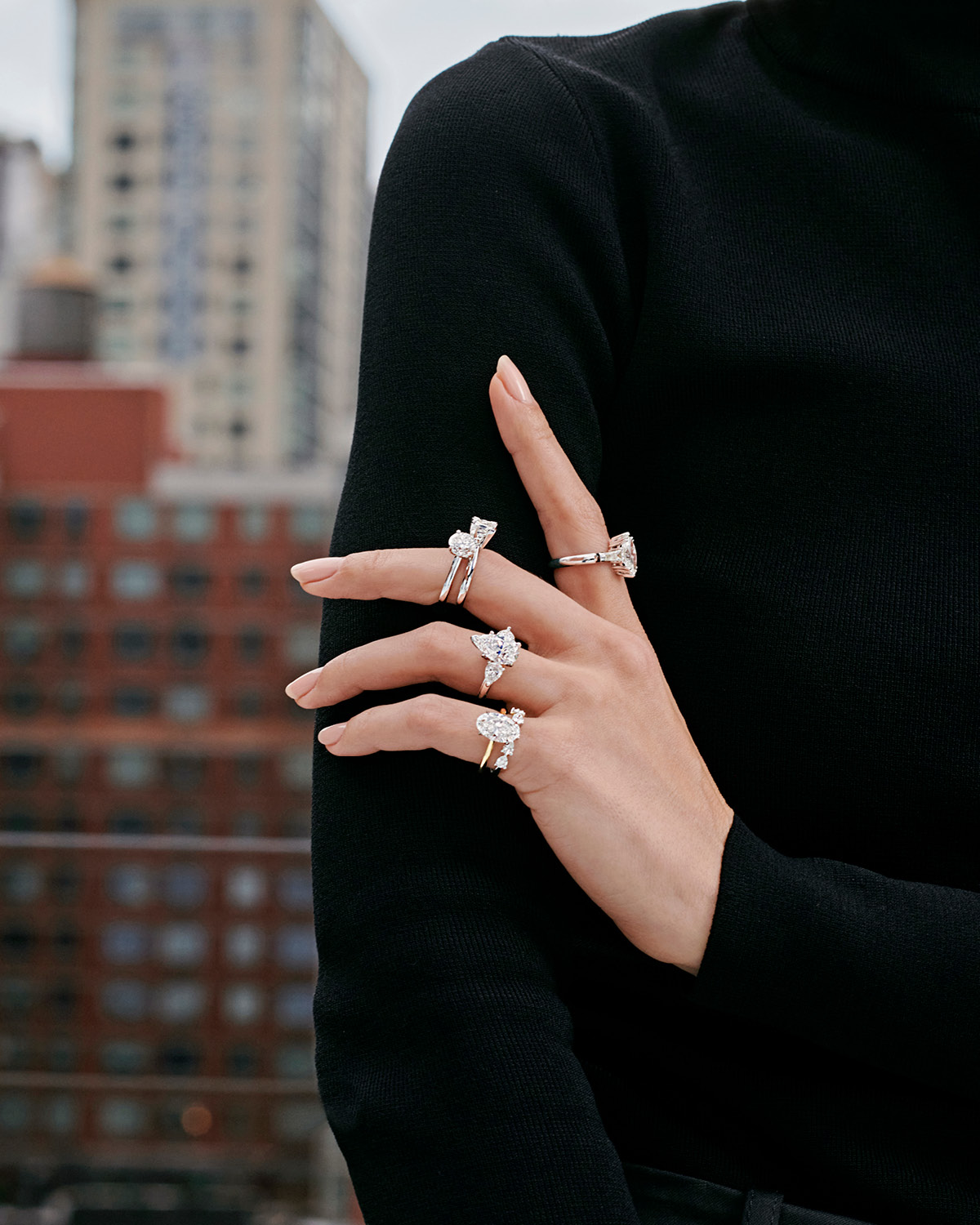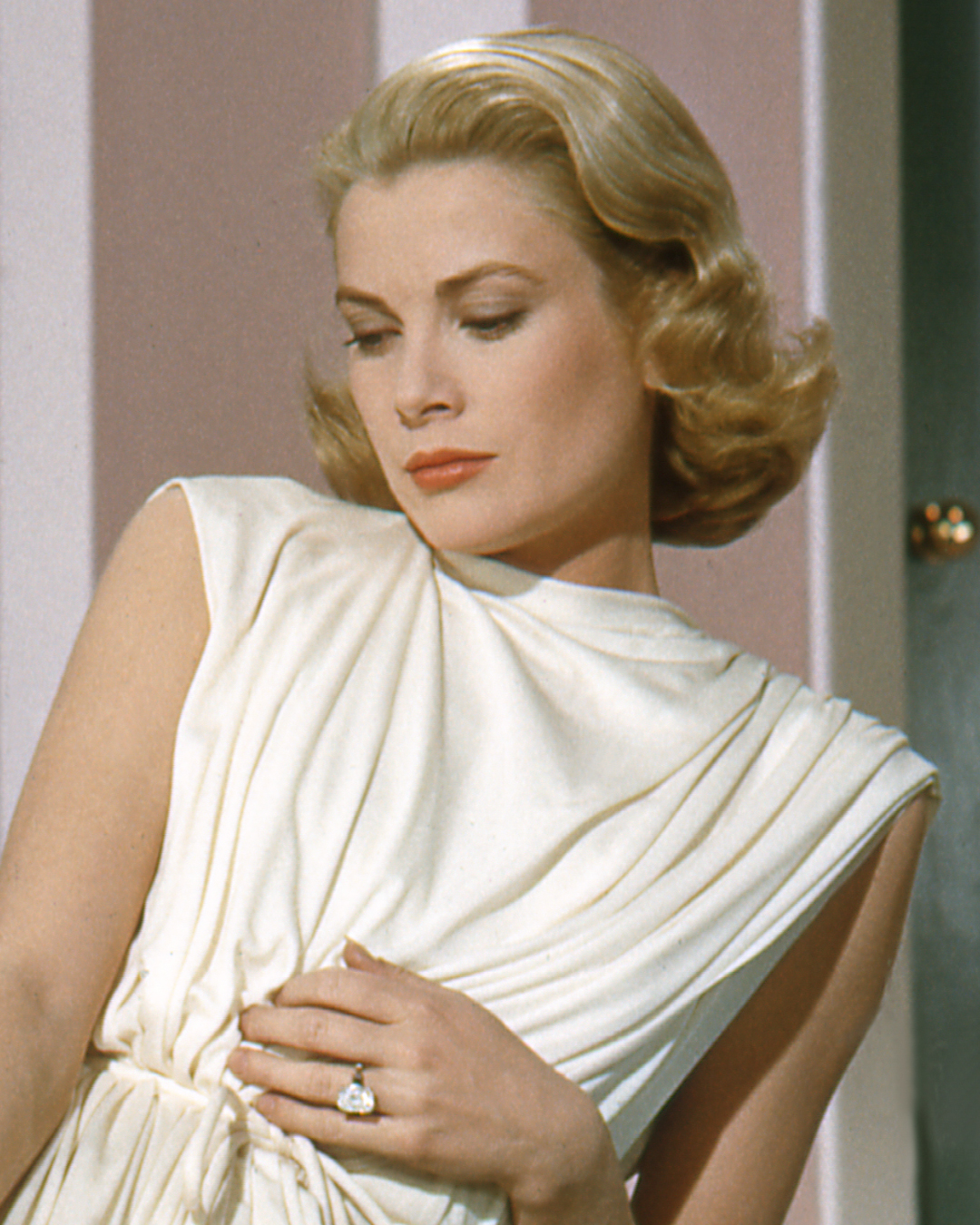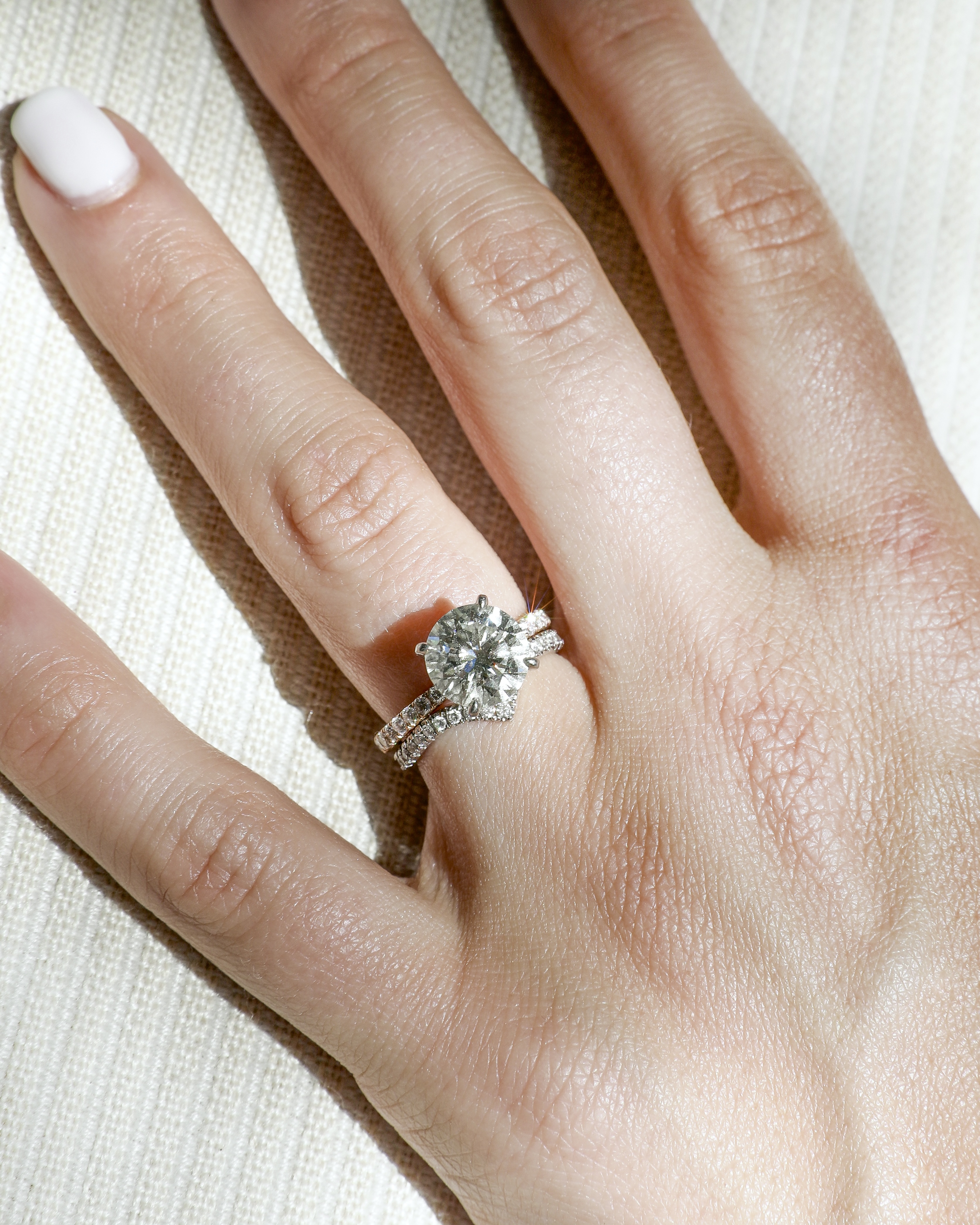There’s no set rule. While some reference the u0022three-month salaryu0022 guideline, most couples today prioritize finding a meaningful, high-quality engagement ring that fits their lifestyle and budget.
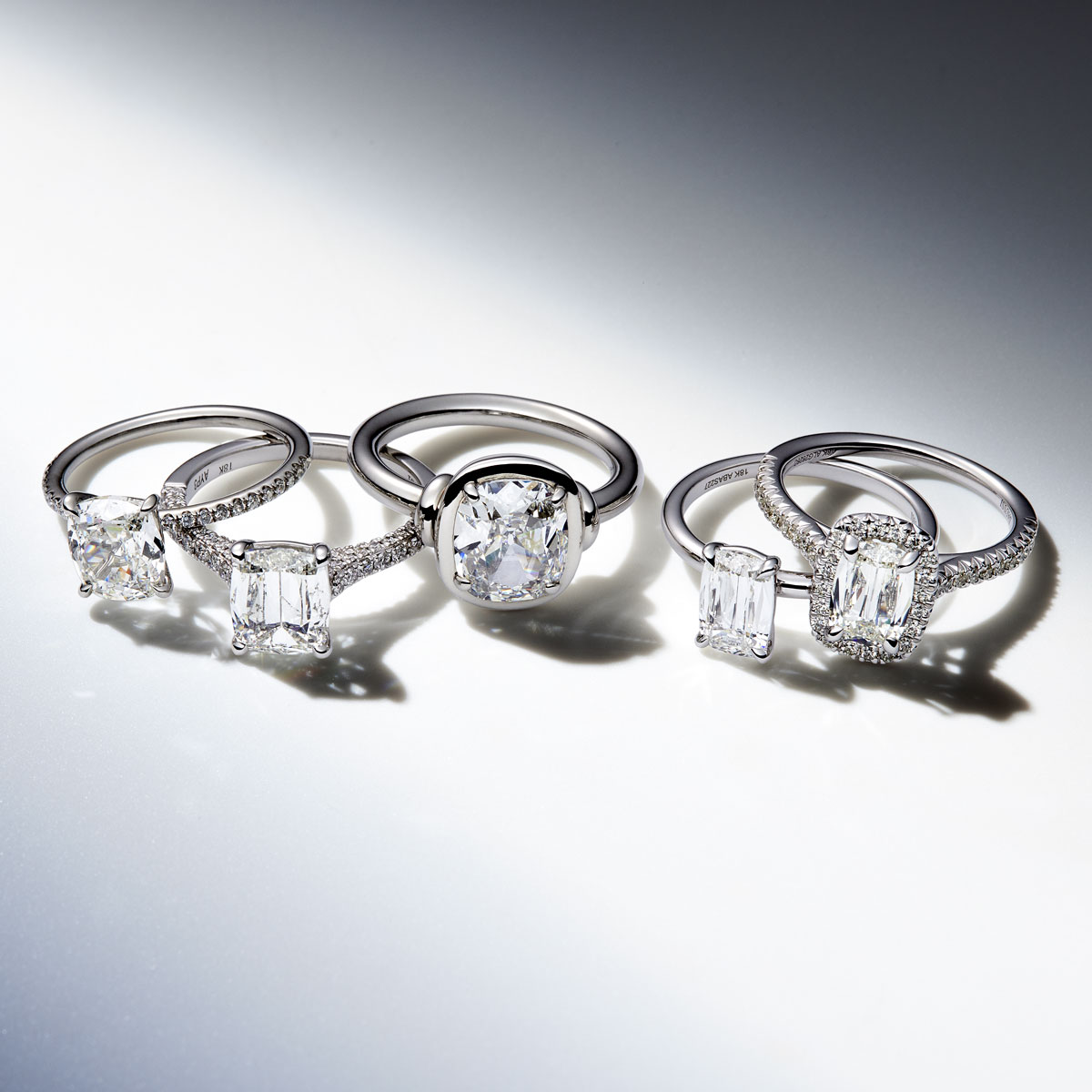
Shopping for an engagement ring is one of the most exciting (and sometimes overwhelming) parts of getting engaged. With so many styles, settings, and stones to choose from, it’s important to find a ring that not only reflects your personal style but also holds long-term value. Whether you’re picking out your own dream ring or shopping for your partner, this guide will walk you through everything you need to know before making this important purchase.
Step 1
Set Up a Budget – How much should I spend on an engagement ring
When it comes to deciding what to spend on an engagement ring, there’s no one-size-fits-all answer—and that’s a good thing. While the “three-month salary” rule (or sometimes two) is often cited as a traditional guideline, it’s just that: a guideline, not a mandate. Most modern couples are choosing to sidestep that formula in favor of something that feels more personal and realistic. Today’s engagement ring shoppers are prioritizing quality, meaning, and lifestyle fit over a predetermined price tag. According to the Natural Diamond Council, the average cost of an engagement ring in the U.S. is around $6,500, but there’s a wide range depending on your taste, priorities, and budget.
Ultimately, the best engagement ring is one that reflects your love story. For many, that means choosing a natural diamond, which carries with it not just beauty, but billions of years of history and a powerful symbol of enduring commitment. If you’re working within a specific budget, there are smart ways to get the most out of a natural diamond: consider going just below milestone carat weights, selecting a shape that appears larger per carat, or choosing a vintage ring. Natural diamonds also hold lasting value, making them a meaningful investment you can pass down through generations. Whether you’re drawn to a bold, fashion-forward piece or a timeless classic, a natural diamond engagement ring brings unmatched authenticity and emotional resonance.
Step 2
What Makes the Value of an Engagement Ring
No matter your engagement ring style, the diamond center stone is usually the focal point of your ring and will make up most of its value. While a diamond center stone is important, it doesn’t have to be “perfect” on paper to be truly stunning.
While it’s essential to ensure that the diamond you choose comes with a grading report from an independent and reputable laboratory like the Gemological Institute of America (GIA), don’t rely solely on the report to make your decision. Grading reports provide valuable information about the diamond’s cut, color, clarity, and carat weight, but these technical details don’t necessarily capture the full story of a diamond’s beauty or your personal style.
Many factors that influence how a diamond appears aren’t reflected in a grading report. For example, a diamond with a lower clarity grade might have tiny inclusions that are invisible to the naked eye, making it just as stunning as a flawless stone (but at a better price point). Similarly, a well-cut diamond with an excellent light return can outshine a larger carat stone with poor proportions. Always view the diamond in person to truly evaluate its brilliance and remember that a higher grade on paper doesn’t necessarily mean a more beautiful diamond engagement ring.
When choosing between a natural diamond and a lab-grown one, it’s worth considering more than just the initial price tag. Natural diamonds are rare, formed over billions of years deep within the Earth, and carry a sense of history, authenticity, and lasting value that lab-grown stones simply can’t replicate. They’re also more likely to retain long-term value and emotional significance. Trust your eyes, your instincts, and your heart to find the diamond shape and ring style that speaks to you and your significant other—and opt for a natural diamond when you want a piece of the Earth’s story to become part of your own.
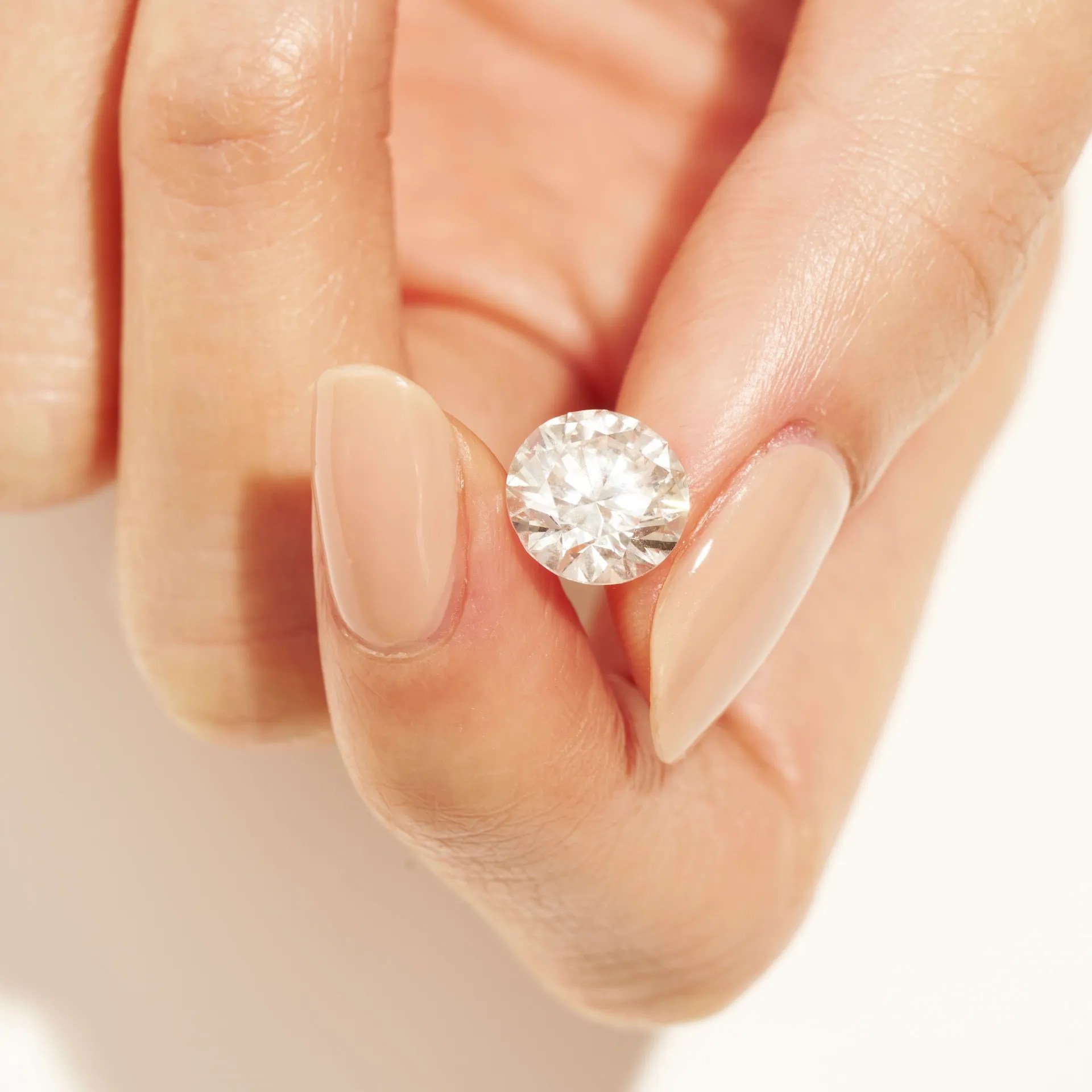

Step 3
The 4Cs and Diamond Grading Reports for Your Engagement Ring
When shopping for an engagement ring, one of the most important things to understand is the 4Cs: cut, color, clarity, and carat weight. These four characteristics determine a diamond’s overall quality and value—and they can also help you figure out what matters most to you. For example, some couples may prioritize size, while others care more about brilliance or purity. The 4Cs give you a framework to compare diamonds and make an informed choice based on your budget and preferences.
Equally important is ensuring that your diamond comes with a grading report from an independent and reputable lab—most notably, the Gemological Institute of America (GIA). A GIA grading report provides an unbiased evaluation of the 4Cs, giving you confidence in what you’re buying. It’s not just a piece of paper, it’s your assurance of quality and transparency. Ask to see the report before purchasing any engagement ring, and remember that a truly beautiful diamond isn’t just about perfect grades. It’s about how the stone makes you feel, how it looks in person, and how it fits into your love story.
Step 4
Try on Different Styles
Always take the time to research, ask questions, try on different styles, and see the diamond in person whenever possible to ensure you’re making a truly informed decision. Even if you’ve been eyeing a particular style on Instagram or Pinterest, try on multiple diamond shapes and settings to see what looks best on your hand. What looks stunning in a picture might not suit your personal style—or feel as comfortable as you’d like for everyday wear. Some things to consider:/col
Diamond Shape: Round, oval, pear, emerald, and cushion cuts all have distinct personalities.
Settings: Solitaire, halo, three-stone, or vintage? Each setting style changes the look of your ring.
Metal Type: White gold, yellow gold, rose gold, or platinum—each offers a different aesthetic.
Band Style: Do you prefer a thin, dainty band or something bold and statement-making?
Don’t forget to think about how your engagement ring will look with a wedding band. Some settings sit flush with a band, while others (like high-profile solitaires) may require a contoured or curved band for a seamless fit.
Buying an engagement ring is a deeply personal experience, and there’s no one-size-fits-all approach. By understanding the basics of diamond selection, choosing a trusted jeweler, and staying true to your personal style and budget, you’ll be well on your way to finding a ring that perfectly symbolizes your love story.
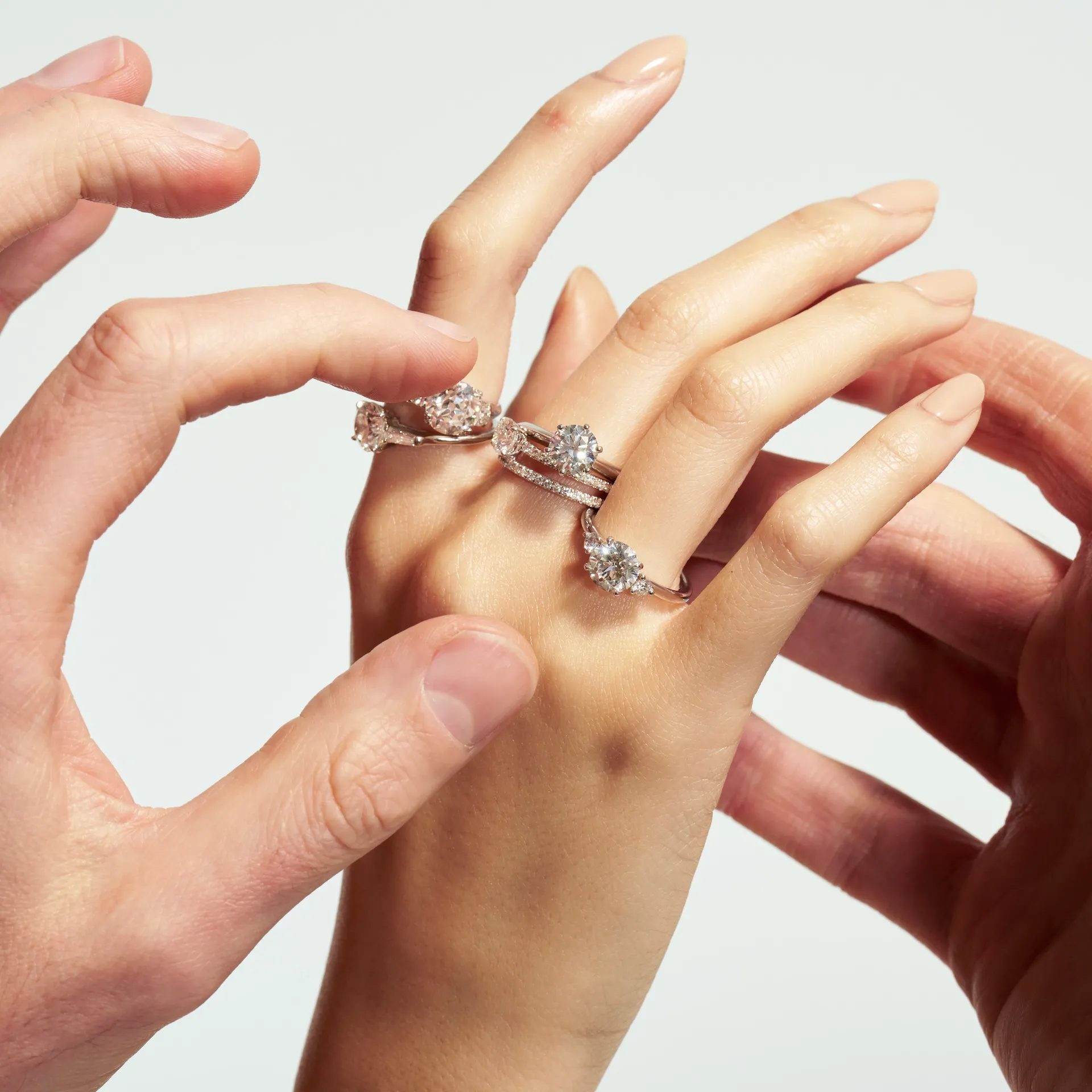
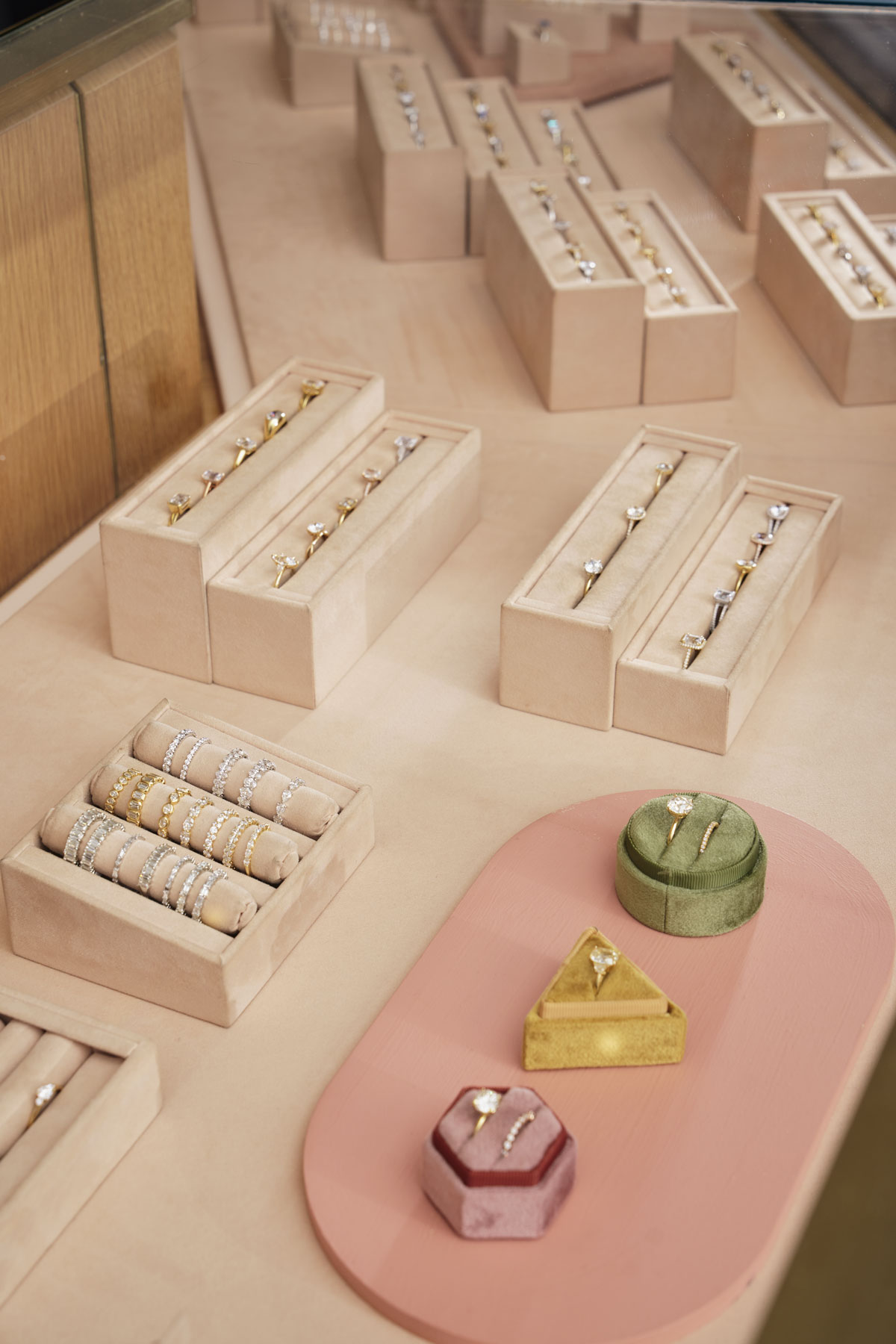
Step 5
Shop Smart
If it seems too good to be true, it probably is—especially when it comes to buying a diamond. While it’s tempting to jump on what looks like an incredible deal, remember that natural diamonds hold lasting value due to their rarity. If a diamond’s price is significantly lower than others of similar size and quality, there’s often a reason. Look closely at the details that can dramatically impact a diamond’s beauty and worth:
Is it natural?
Lab-grown diamonds may appear similar but are mass-produced and far less valuable over time.
Has it been treated?
Some natural diamonds are treated to enhance their appearance, but these treatments significantly lower their value and should be disclosed.
Does it have damage?
Chips or cracks may not be visible at first glance but can greatly reduce the diamond’s worth and durability.
Does it look milky?
Subtle milkiness in a diamond’s appearance isn’t listed on grading reports but can dull its brilliance, significantly affecting its value. This issue is especially common with diamonds sold online.
Don’t forget to think about how your engagement ring will look with a wedding band. Some settings sit flush with a band, while others (like high-profile solitaires) may require a contoured or curved band for a seamless fit.
Buying an engagement ring is a deeply personal experience, and there’s no one-size-fits-all approach. By understanding the basics of diamond selection, choosing a trusted jeweler, and staying true to your personal style and budget, you’ll be well on your way to finding a ring that perfectly symbolizes your love story.
Step 6
Shop at a Trusted Retailer
To ensure a smooth and confident engagement ring shopping experience, shop at a fine jewelry retailer you trust.
- Seek recommendations from friends and family who have purchased engagement rings.
- Read online reviews to learn about customer experiences.
- Visit a jeweler in person to see their selection and ask questions.
- Look for additional services like warranties, resizing, and trade-up policies.
Reputable retailers often have a long-standing history of providing high-quality products, excellent service, and fair value—a reputation earned over time. A great retailer will take the time to educate you, help you find your ring size, present you with multiple diamond shape and ring setting options, work with your price point, and ultimately help you make an informed decision with ease.
When choosing a reputable jeweler, consider not only the diamond engagement ring but also the additional services they offer, such as warranties, lifetime maintenance, trade-up policies, and return policy options. These factors can significantly impact your long-term satisfaction. Look for a jewelry store that will be there for you long after your purchase, providing maintenance, resizing, repairs, and guidance for future diamond purchases (think: wedding bands and anniversary gifts) to celebrate life’s milestones and occasions.
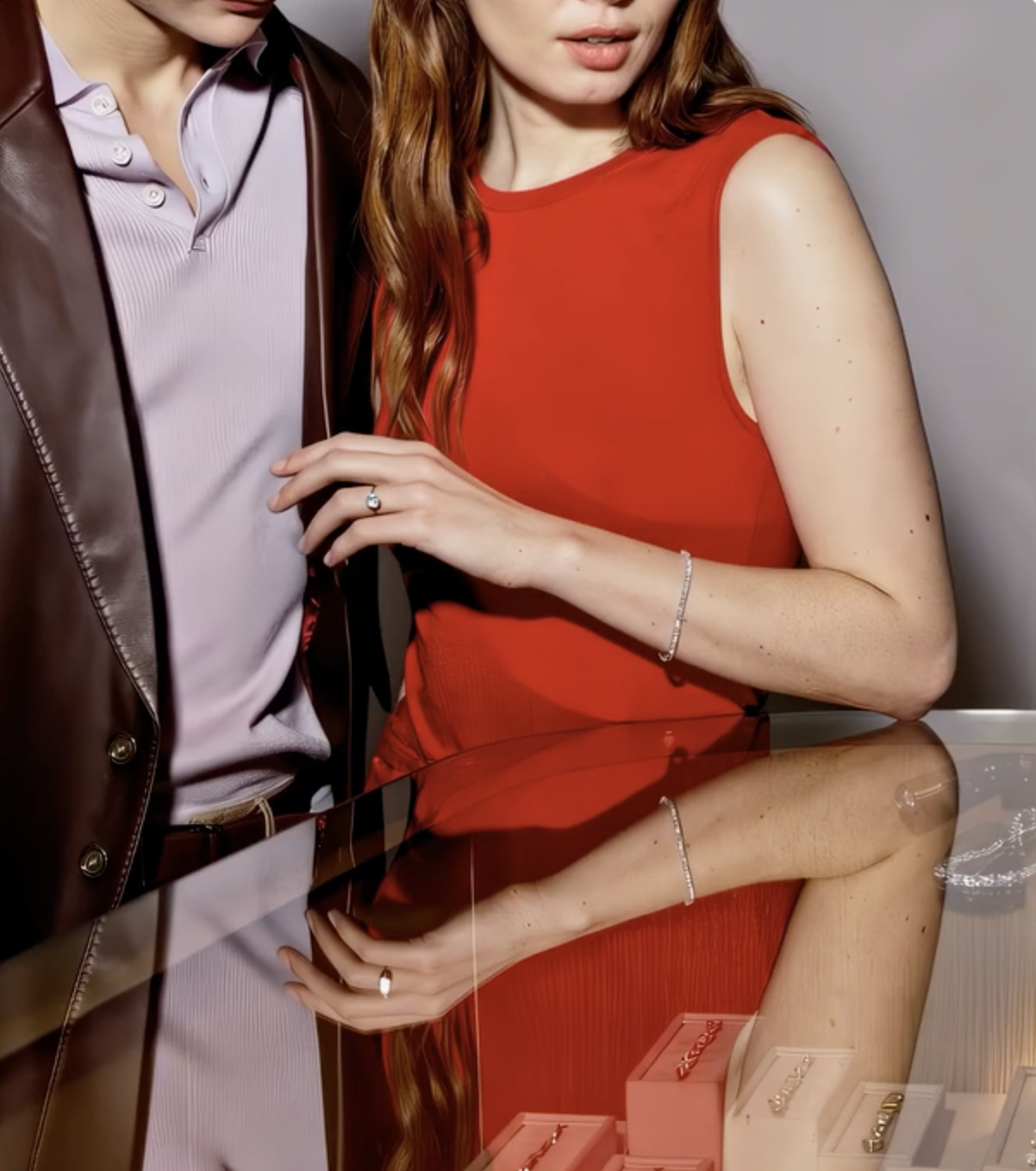
FAQs: Engagement Ring Shopping
About Natural Diamond Council
Natural Diamond Council (NDC) is the global authority on natural diamonds. As a not-for-profit organization, NDC is committed to advancing the integrity of the natural diamond industry and celebrating the unmatched beauty and value of natural diamond jewelry. NDC serves as the industry’s definitive voice, offering expert insight, trusted education, and unparalleled access to the world of real, rare, and responsibly sourced natural diamonds.
